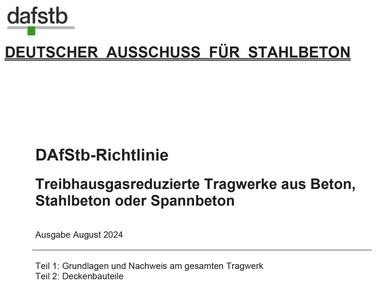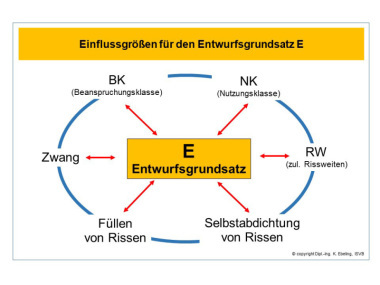Categorization of permissible GHG emission limits relative to built structural frameworks according to the DAfStb guideline
Constructing and decommissioning buildings, particularly their structural frameworks, generates enormous greenhouse gas (GHG) emissions. As structural engineers, we thus make a major contribution to the GHG emission footprint of the entire building. Reducing embodied emissions is not only a legal obligation, but also a significant contribution to protecting our climate with the aim to stop global warming and reach the 1.5 degree target. To tackle these challenges, it is imperative to draft clear standards and legal requirements.
The German Committee for Structural Concrete (DAfStb) has embarked upon this route by publishing its new guideline on “Greenhouse gas-reduced structures made of concrete, reinforced concrete or prestressed concrete.” This document defines a reference for the year 2020 for residential and non-residential buildings. Relative to this reference, the guideline proposes greenhouse gas reduction classes to classify the completed building in terms of its GHG emissions.
In an internal study, Schüßler-Plan assessed 14 non-residential buildings and five residential buildings made of reinforced concrete with a wide range of characteristics in accordance with the specifications of the DAfStb guideline. Buildings were assessed applying kg CO2e/m² of gross floor area as the relevant unit. A service life of 50 years was assumed.
In the subsequent analysis, quantities taken from as-built BIM models and rebar lists were linked to the GWP data records according to Table B.1 of the DAfStb guideline. On average, all buildings were below the limit defined by the DAfStb. Non-residential buildings can be grouped under GHG reduction class TM-50, while GHG reduction class TM-40 can be assigned to residential buildings.
This paper is to categorize greenhouse gas reduction classes relative to completed projects. It should provide guidance for determining GHG emissions attributable to load-bearing structures.








